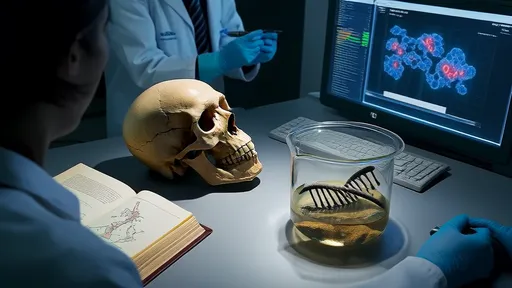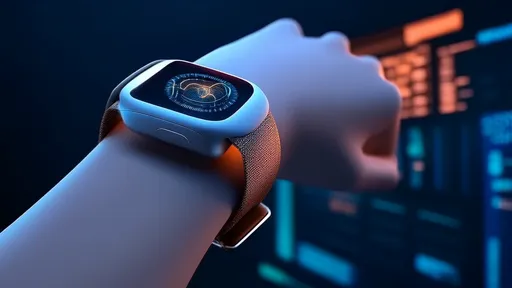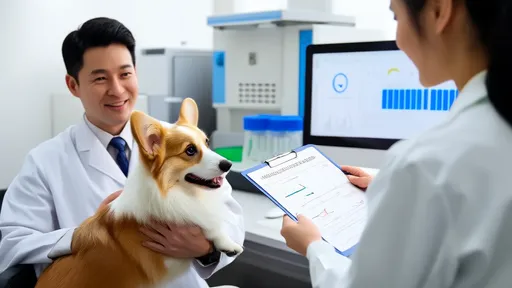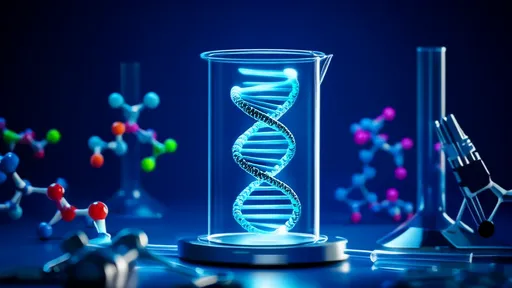The fitness industry stands on the brink of a technological revolution as sweat biosensors emerge as game-changing tools for athletes and health enthusiasts alike. These tiny, wearable devices analyze biomarkers in perspiration to provide real-time feedback about workout intensity, hydration levels, and metabolic efficiency. Unlike traditional fitness trackers that measure heart rate or steps, sweat biosensors offer a direct window into the body's biochemical processes during exercise.
The Science Behind Sweat Sensing
Human sweat contains a treasure trove of physiological data – electrolytes like sodium and potassium, metabolites such as glucose and lactate, and even stress hormones like cortisol. Advanced biosensors use flexible electronics and enzymatic reactions to detect these compounds through minimally invasive skin contact. Some cutting-edge models employ microfluidic channels to collect and analyze tiny droplets of sweat, while others use colorimetric patches that change hue based on biomarker concentrations.
What makes this technology revolutionary is its ability to provide molecular-level insights during actual workouts. Athletes can now monitor when their body switches from aerobic to anaerobic metabolism based on lactate thresholds, or precisely determine their optimal hydration strategy by tracking electrolyte loss in real time. This eliminates the guesswork from training regimens and allows for truly personalized workout adjustments.
From Professional Sports to Everyday Fitness
Initially developed for elite athletes, sweat biosensors are now finding their way into consumer fitness markets. Major sportswear brands have begun integrating these sensors into headbands, wristbands, and even compression shirts. The data syncs seamlessly with smartphone apps that not only display metrics but also provide actionable recommendations – like when to drink an electrolyte supplement or reduce exercise intensity to avoid muscle fatigue.
For casual gym-goers, these devices offer unprecedented visibility into workout effectiveness. Instead of relying on perceived exertion or generic calorie estimates, users can see exactly when their body enters the "fat-burning zone" or when they've depleted their glycogen stores. This metabolic transparency helps optimize both the duration and intensity of exercise sessions for maximum benefit.
Beyond Fitness: Health Monitoring Applications
The implications of sweat biosensing extend far beyond the gym. Researchers are exploring applications for diabetes management through non-invasive glucose monitoring, as well as early detection of dehydration in elderly populations. Some prototypes can even measure inflammatory markers that indicate overtraining syndrome in athletes or track alcohol metabolism after consumption.
Military organizations have taken particular interest in this technology for monitoring soldier health in extreme conditions. By tracking multiple biomarkers simultaneously, commanders can identify heat stress, nutrient deficiencies, or impending metabolic crises before they become dangerous. Similarly, occupational health experts see potential for protecting workers in high-temperature environments like steel mills or firefighting.
Challenges and Future Developments
Despite the exciting possibilities, sweat biosensors still face technical hurdles. Variability in sweat rates between individuals and across different body regions requires sophisticated calibration algorithms. Environmental factors like humidity and temperature can also affect readings. Researchers are working on self-calibrating systems that account for these variables while maintaining accuracy.
The next generation of devices aims to combine sweat analysis with other physiological measurements like heart rate variability and core temperature. Some prototypes explore "energy harvesting" technologies that could power the sensors using the sweat itself. As machine learning algorithms become more sophisticated, we may see systems that can predict performance declines or recommend recovery protocols based on biomarker trends.
As these devices become more affordable and widespread, they promise to transform how we approach exercise – shifting from generic workouts to truly bio-responsive training. The era of guessing your body's needs during exercise may soon give way to precise, biomarker-driven fitness optimization that maximizes results while minimizing injury risk.

By /Jul 3, 2025

By /Jul 3, 2025

By /Jul 3, 2025

By /Jul 3, 2025

By /Jul 3, 2025

By /Jul 3, 2025

By /Jul 3, 2025

By /Jul 3, 2025

By /Jul 3, 2025

By /Jul 3, 2025

By /Jul 3, 2025

By /Jul 3, 2025

By /Jul 3, 2025

By /Jul 3, 2025

By /Jul 3, 2025

By /Jul 3, 2025

By /Jul 3, 2025

By /Jul 3, 2025

By /Jul 3, 2025

By /Jul 3, 2025